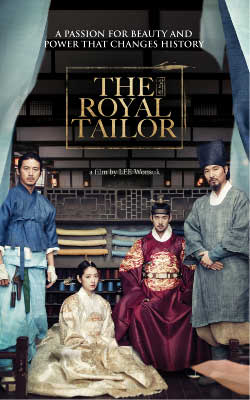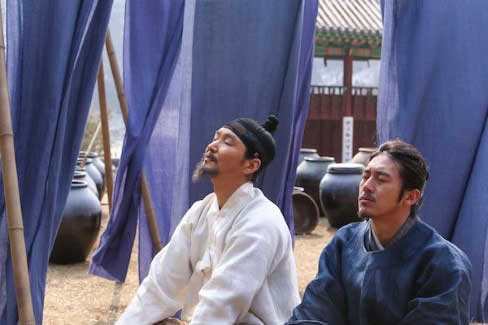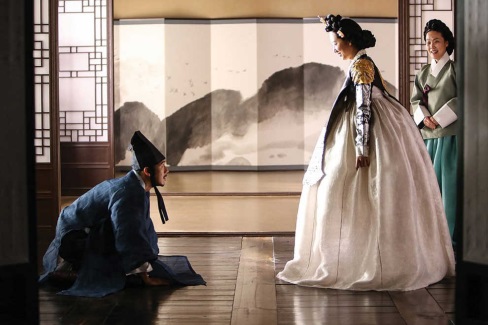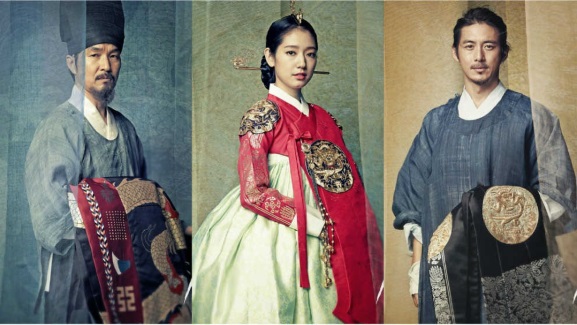The Royal Tailor

Director: Lee Won-suk
Year: 2014
Rating: 6.5
Country: Korea
I have
never been a fan of the hanbok, the traditional Korean female attire. It
is more utilitarian than aesthetic, hiding more than accentuating the female
form. Which was probably intentional in a very conservative parochial society.
Its origins go back over two-thousand years and for the most part it hasn't
changed that much. In the older days, it was generally white to signify the
woman's purity. During ceremonies, some dash and color would be added. It
feels rather drab especially in comparison to the traditional female garb
of other Asian nations - the kimono, the cheongsam, the sari and the ao dai
from Vietnam. Male fashions for men in Korean history were no more interesting
- the wide brimmed hats, the absurdly long sleeves and colorless shapeless
gowns. That is the background for this film set in the royal court during
the Joseon period.
Court intrigue, rivalries, marital difficulties all take part in the narrative
but what will really capture your imagination are the ornate at times glorious
costumes of the film. There are a number of themes that run through the film
- the primary one being conventional thinking vs innovative imagination.
As history has shown us the old tries to stymy the new - to doubt it, condemn
it, burn it, crucify it and erase it - but in the end change always comes.
Jo Doi-seok (the great Han Suk-kyu - Shiri, Christmas in August) is the Royal
Tailor, responsible for designing and producing all the clothes for the King,
Queen and the Court. He has a large array of seamstresses to help him. But
there are rigid rules in place as to what the clothes can look like and they
haven't changed through Doi-seok's tenure to three Kings. A new King (Yoo
Yeon-seok) has come to power after his brother died. Yeongjo of Joseon (1694
- 1776) was born to a consort of lowly origins and this hung over his first
years as King. He is full of anxiety, insecurities and doubts about his worthiness
to replace his brother. His queen is Jeongseong (Park Shin-hye), who in real
life he was married to when he was eight years old and she was ten - in the
film they are older when this occurs. Months into the marriage, she is rumored
to still be a virgin. Based a bit on history. Though, he was to have children
with a number of consorts over the years, she never had any. The Court is
trying to persuade him to take on another Queen to have an heir.
Into the court intrigue and marital discord, is the Royal Tailor and his
rival. There is a new tailor on the block - Lee Gong-jin (Go Soo) who is
young, flashy, modern, full of ideas and very attractive to women. He designs
some outfits for the men and women of the court that do away with the long
sleeves, adds color, style and form to the hanbok. Doi-seok admires this
young man - even envies his talent - but at the same time sees him as a potential
roadblock to his becoming a noble. Especially, when the Queen hears about
him. Doi-seok warns the man that upsetting the status quo is dangerous, but
Gong-jin will not listen. He needs to express himself. It is hard not to
think of Mozart and Salieri as this plays out. The real star of the film
is Jo Sang-gyeong, who designed some spectacular looking hanboks that the
Queen and her rival wear. Plus, over a thousand other hanboks for other women
to wear. The whole film is a feast for the eyes though I wish it had moved
along a little faster. I have to guess that though the King and Queen are
real historical figures, the remaining is fictional.





